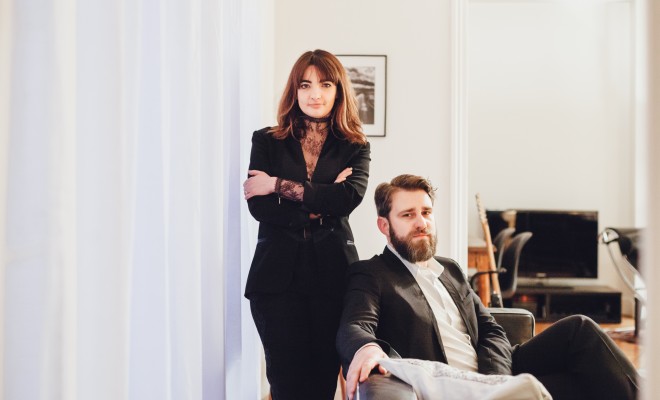 Photography: Nadia Gric
Photography: Nadia Gric
Art de vivre by Julien and Audrey
2016 is an important year for France for several reasons. One of them is a centenary of a legendary Battle of Verdun, which is considered to be one of the longest and most cruel battles of the World War One. This battle, which opposed French and German soldiers and lasted for nine months, has a great significance for French people. It’s a symbol of a tough fight and tenacious defense of the country’s borders, which demanded a huge number of victims. This episode of war is now carrying around itself an aureole of myths and legends constructed during the years, and represents one of the most important history pages for France. A newly constructed memorial of Verdun has recently opened its doors for different generations with a goal to commemorate this conflict and encourage reflection on the subject.
This small historical lesson served as an introduction to a conversation with a creative French couple: Julien Woycinkiewicz and Audrey Kesler. Julien, who is a part of Brochet Lajus Pueyo agency of architects has contributed to the Renaissance of Verdun Memorial Museum, his wife Audrey is working in Alexis Mabille Haute Couture fashion house and equally realizing other artistic projects. The conversation took place while both of them were in an intensive preparation for moving into the new apartment (readers can see it the in the photos – editor’s remark), but in spite of having so much to do, Julien and Audrey found time not only to meet and tell the story of Verdun and what it means to them, but also to talk about their lifestyle. The story, which had to concentrate on architectural challenges faced while working on a historical event, transformed into a sincere (and very French!) talk about work, creation, art, collaboration and joy to live. During the interview, music was playing constantly, mini burgers and traditional French sandwiches croque monsieur were seducing my eyes while the artistic apartment with all its countless art albums, music instruments and iconic furniture (that Le Corbusier sofa!) was demanding my attention as much as the stories Julien and Audrey were ready to tell.
Traces of Bordeaux in a Parisian routine
Neither Julien, nor Audrey are Parisians – Bordeaux is a city in which they first met. It was a career path which brought them together in a capital of France. Julien was working in the Bordeaux branch of the agency of architecture named as Brochet Lajus Pueyo at the time when his wife got a new job offer in Paris. So he decided to follow Audrey and install himself in the Parisian office of the agency. Since then, a young family has been creating their dreams and daily life in the city of eternal love. But the path which took them here was long and complex. Julien doesn’t hide the fact that architecture wasn’t his first choice. For some time, he dreamt of being a musician (musical instruments in the apartment prove it very well) and even studied in a conservatory. Nevertheless, at the end of studies a young man was faced with a dilemma: choose music as a way to make a living or try something else. Feeling an equal fascination for constructions and buildings, Julien chose to try himself in architecture. He jokes about having got into the school of architecture “by accident”, but he doesn’t regret this particular decision. Now the architect is realizing projects of different scales, among which one can find public commands (libraries, pools, museums) and a smaller part of private ones.
It was a mutual project which brought Julien and Audrey together. At that time, the young man was studying at the before mentioned school of architecture and Audrey was a student in a school of fine arts in Bordeaux, where she got much useful experience. Even though her memories from studying years aren’t so distinctive anymore, she affirms that it was the time when first significant artistic reflections took place. This project was concentrated on abandoned places in Bordeaux and it marked the beginning of creative collaborations between Julien and Audrey. The aesthetics of forgotten, mysterious and hidden places crystallized in a special album, where photographs by Julien and texts written by Audrey express their way to approach this kind of theme. Even though a woman asserts that this experiment carried out during studying years wasn’t very professional, it has a special meaning - it was the first type of the project meant to commemorate a special place.
Verdun – what does it mean now?
Julien admits that the reconstruction of the memorial of Verdun was one of the most interesting projects he’d ever been commisioned with. The first version of the museum was built in 1967 and dedicated to soldiers, but the goals of a rebuilt memorial are quite more ambitious. Now it’s not only a memorial aiming to commemorate the victims of the battle or war, but also a center of interpretation, where the newly added places enrich the old building. An auditorium, center of documentation (for everyone who wants to access the archives of documents concerning the battle), library, shops, cafe, tourism office, educational room for students and the space for kids are among of them. Julien emphasizes that “both French and German soldiers participated in this battle, so the new version of the memorial is meant to commemorate both sides – impartiality was one of the principal goals of this project.” Audrey adds that this museum “isn’t a gravestone for soldiers who died in a battle – it’s a place for reflection”. She also adds that coming up with an attractive concept of a museum constituted a big challenge, especially in a modern society of consumation. The works of reconstruction started in 2013 and during this period the team had to face a great number of obstacles – technical and aesthetical. Eventually it was decided to prolonge the already existing building, make it bigger.
“The aim of Olivier Brochet (who’s one of the founders of Brochet Lajus Pueyo) wasn’t just to reconstruct the memorial for the war – he wanted to excite the curiosity of people for the region of Verdun in general. It’s a place not only for those passionate about the war, but about the culture as well,” states Julien. Because of this reason, numerous exhibitions are organized in the museum, which take painting or sculpture as an object. Audrey emphasizes the magical power of surrounding scenery. It’s a place where time really stops: “there are no other buildings around this museum in the battlefield and it creates an unusual feeling.”
What does it mean to construct a museum, what kind of experience has the French architect obtained from it? These questions are circling in my head until Julien starts talking himself about behind-the-scenes side of this work and evokes some really bizarre situations. According to the architect, this work was extraordinary due to an unusual building site. Because of the reconstruction, the battlefield had to be digged. During the process some bullets, traces of the weapons or even body parts were found. This is when the man mentions a really macabre fact: having digged out a body, it’s absolutely essential to verify if it dates from the year 1916. As people in the region know it’s a battlefield, it’s possible that some bodies were put underground after this date. “These reasons aside, it was equally interesting to work with the museum because of its cultural content – museums always have a certain context which must be taken into account. As I mentioned before, even the place of the memorial is attention-worthy. When you arrive there for the first time, a really strange feeling embraces you – that indescribable atmosphere is very effective. Another reason is a possibility to create something in a memory of people, pay a tribute to their close ones. It’s not easy because it requires taking certain distance. Without that, it’s impossible to create a modern building capable to capture the interest of people of different age and keep the historical spirit at the same time,” Julien tells us. Is he interested in history himself? “This project forced me to do some research in the field. Being in the place of the battle, I had to be interested not only in history, but also in the landscape, its details, and scenography in general. I’ve learnt many, many things. The place of such energy requires you to plunge into details. It’s very fascinating.”
While talking about the first date of memorial’s re-opening (which was February 21st), Audrey and Julien don’t hide their joy because of people’s reactions: “We’re very interested in a human factor and the way that museum can touch people. It’s amazing to create an international museum, but an ability to touch those who are the closest – this is the thing which fascinates us the most.” The second and official date of memorial’s re-opening in which the President of France Francois Hollande and the Chancellor of Germany Angela Merkel will participate, is 29th May.
Creating outside of work
Among other projects realized for agency Brochet Lajus Pueyo, one can find a cultural complex and a series of apartments in a commune of Lormont. Julien doesn’t neglect Bordeaux city as well – the architect has designed a modern building with a surrounding garden entitled as Jardin de Cybele. There are also several other projects for Bordeaux, which haven’t been realized yet. During the conversation, Julien shares some of his architectural dreams and shows a portfolio, full of unrealized (yet?) experiments and studies either for agency or purely on his own. There is an ensemble of offices and house apartments in Jingzhou prefecture in China, a Pavilion of Tolerance in the Red Square in Moscow, or a very untraditional building composed of cubes and entitled as “Lego for Giants”, situated in Iran. And even though it’s only a little part of Julien’s work, each one of them is significant for its clear, minimalistic vision – and it doesn’t imply by any means that the aesthetic is repetitive or boring. Julien reveals that now he’s working in collaboration with David Héron, an associate with whom he worked on the concept of the Pavilon of Tolerance and a museum in Portugal. Right now their main preoccupation is a project in Iceland. There is also Audrey’s name in the credits of some buildings. “We seek to get better and inspire ourselves all the time – it’s an inseparable part of our work. There is work for companies and with the clients, but on the other hand, there is work for ourselves, which isn’t any less important,” she tells.
Audrey’s art is more ephemeral, feminine. Experiments with various art forms make her portfolio very rich. The most significant proof of the fascination that she feels towards the nature are short movies portraying nature’s world and its habitants. Some of the painted works also reflect nature’s theme. Aside of that, Audrey gives much attention to words and sounds – this is evident in her modern poetry pieces. The woman uses poetic words also to accompany her photographs, in which mostly buildings are portrayed. The synthesis of natural and urban worlds is very strongly felt in the creations of Audrey. These two poles, despite of their very different nature, complement each other.
When I ask the couple if they think of themselves as creative people, they both smile. “I don’t know if you can call it creativity, but sharing ideas constantly is a very important thing for us,” Audrey explains. As work occupies even their leisure time, it’s obvious that the couple belongs to the category of people for whom working is a driving force of improvement. So this is impression that I carry with myself after the conversation – an image of two passionately working people who find creation itself the best inspiration.


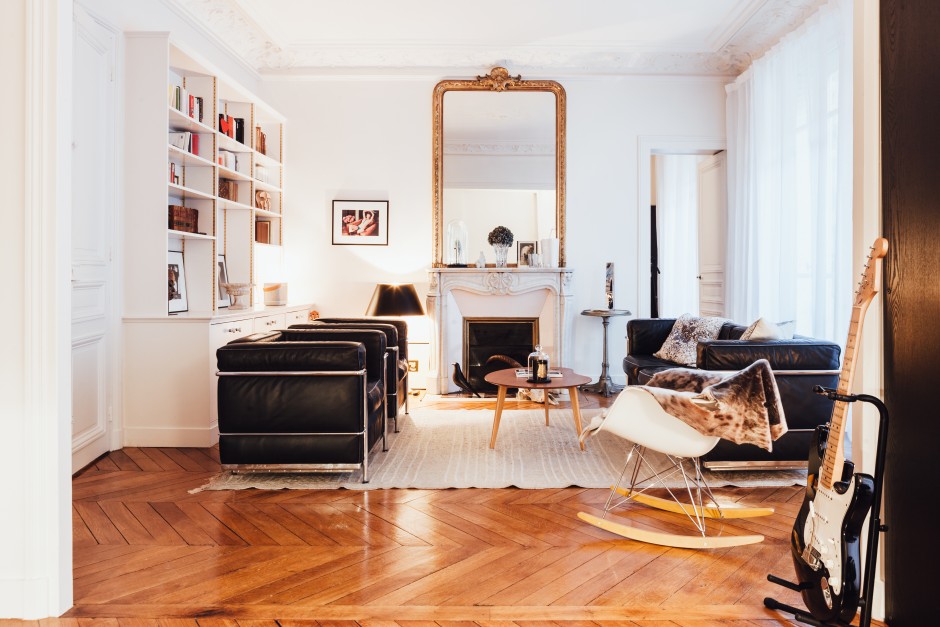
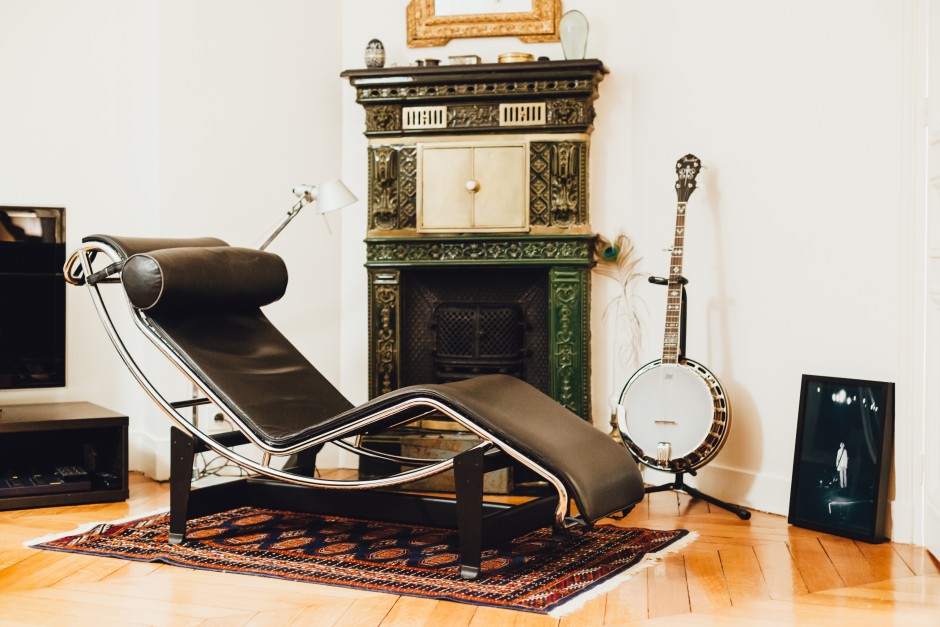
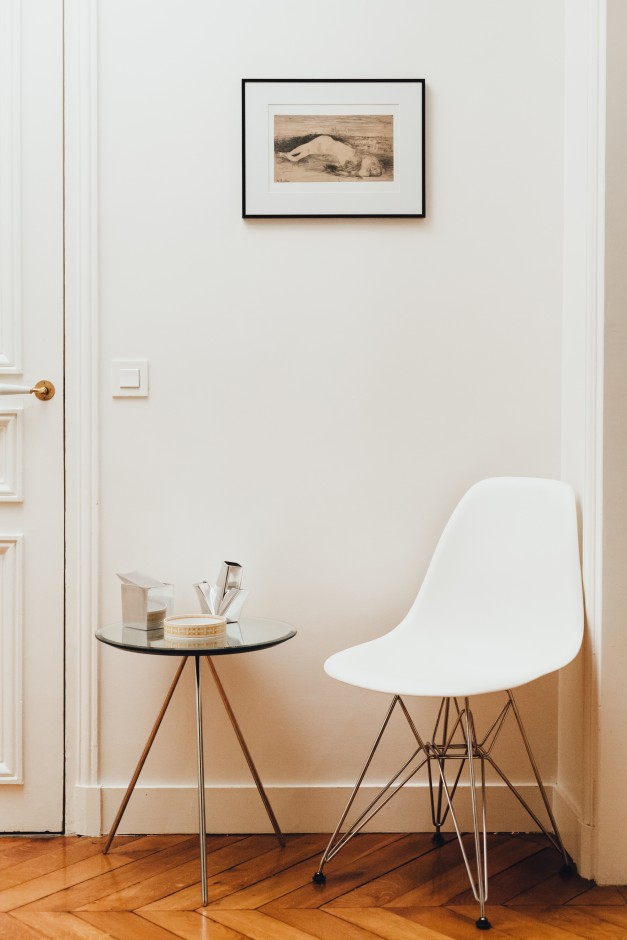
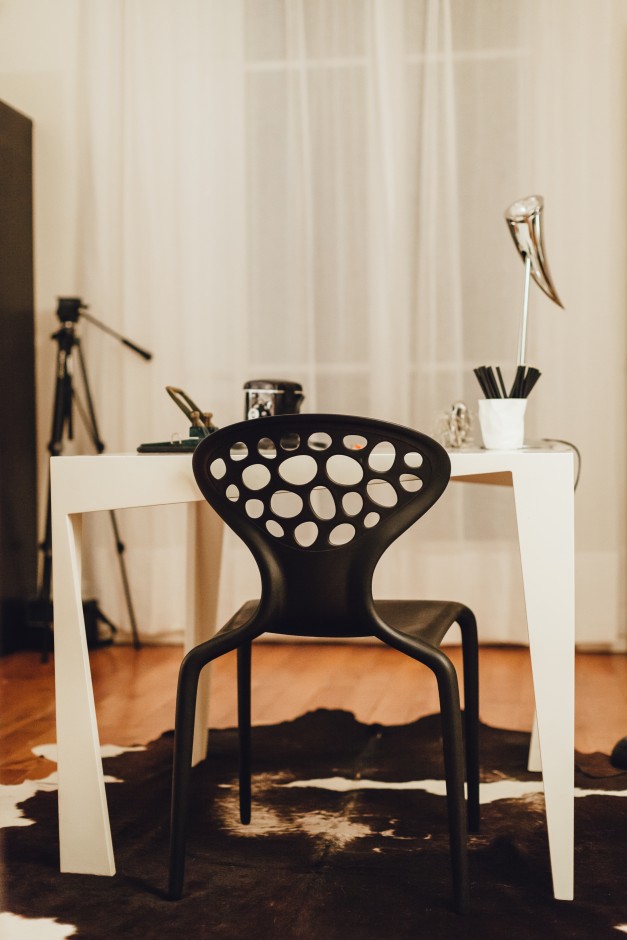
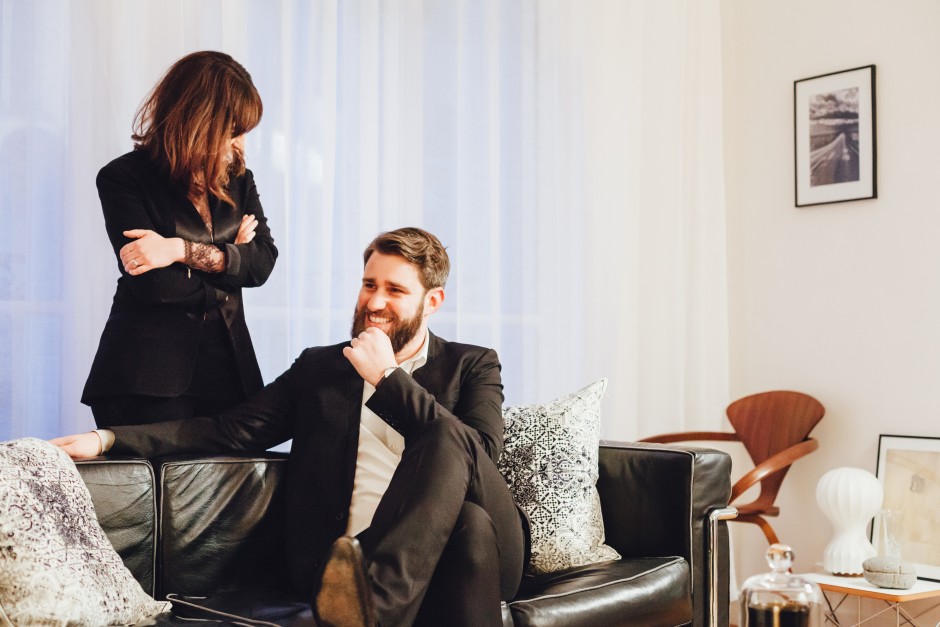
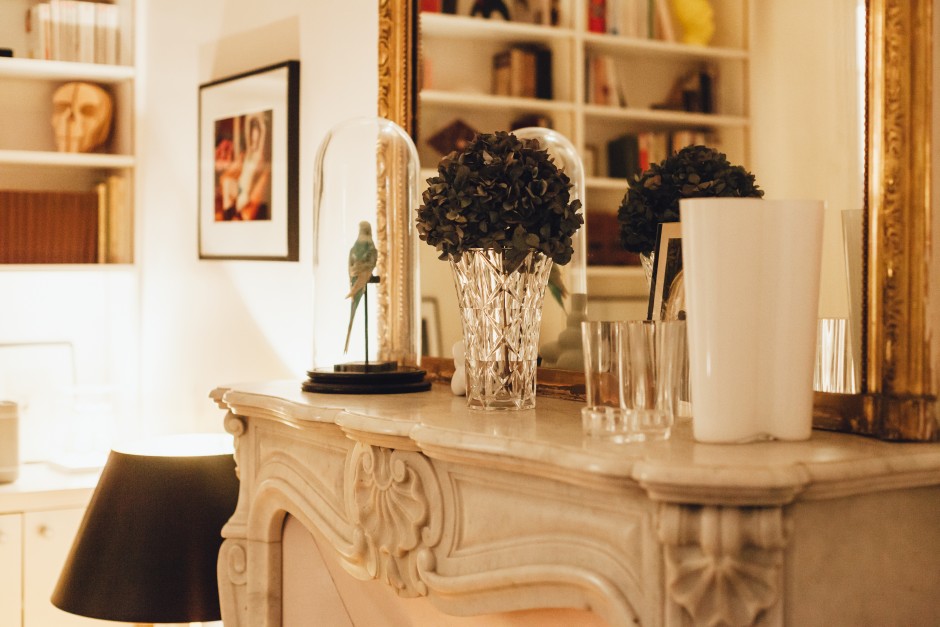
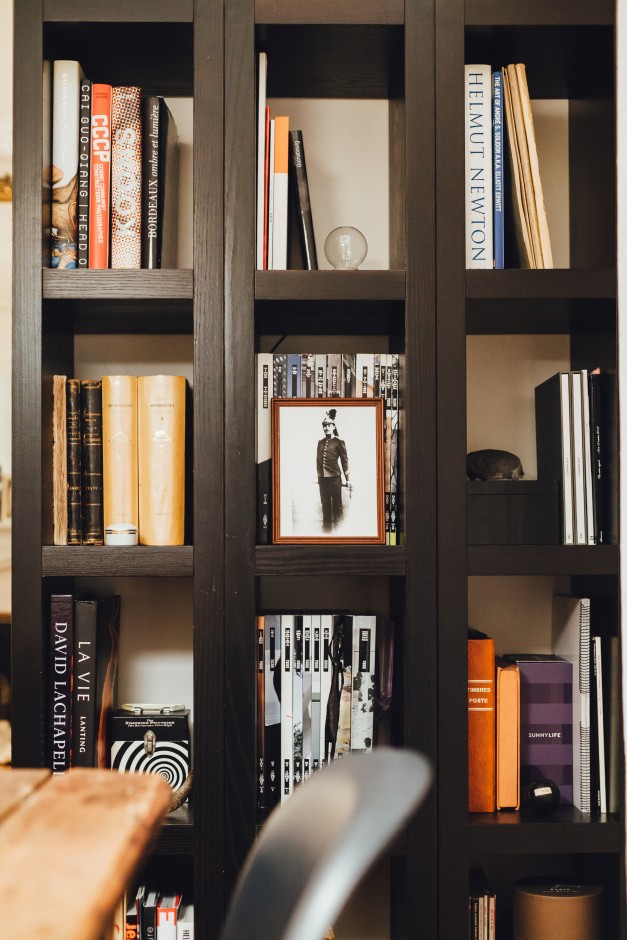
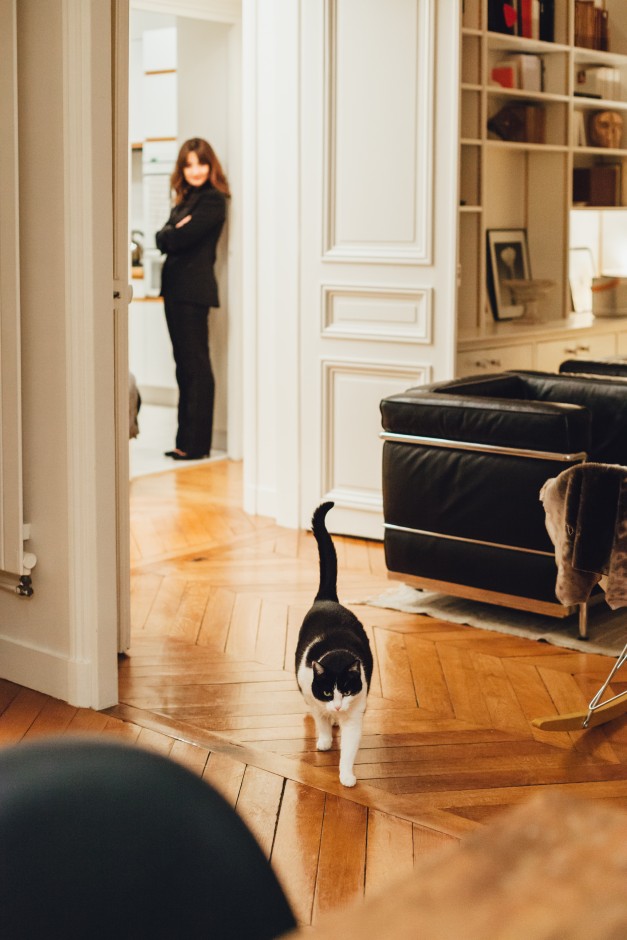
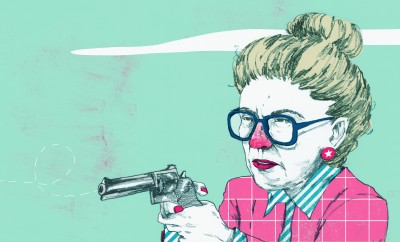
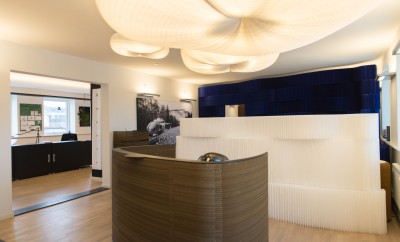
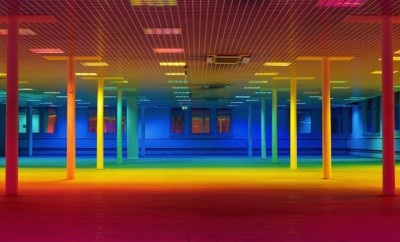

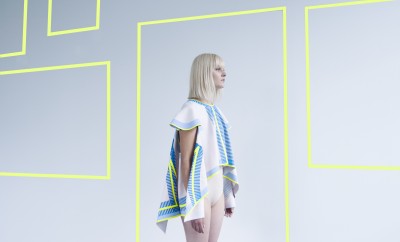
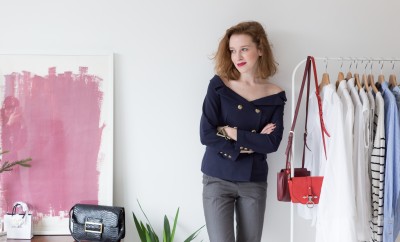
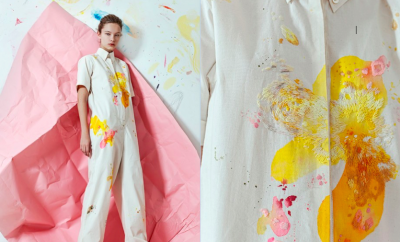
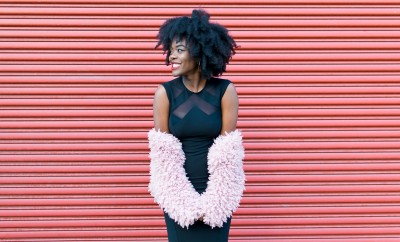

You must be logged in to post a comment Login